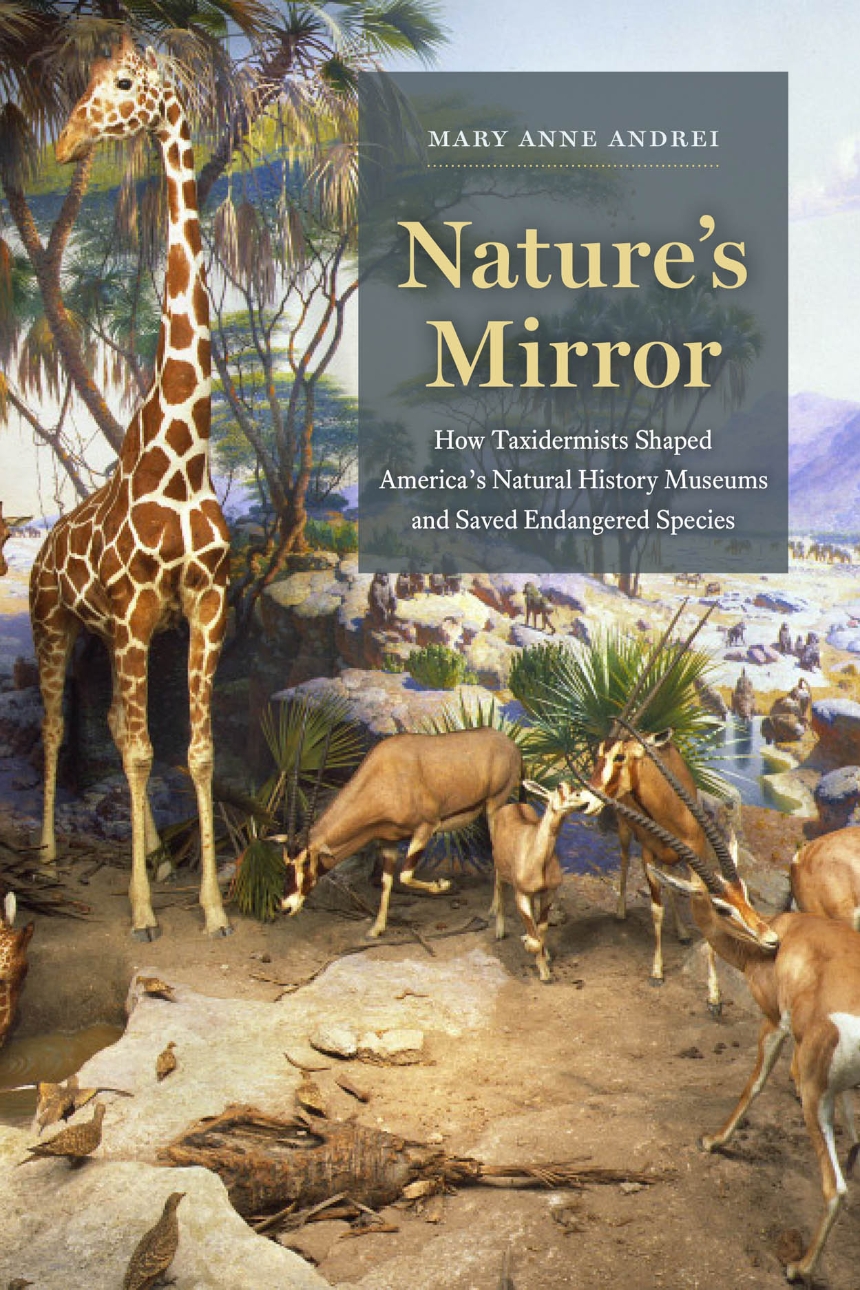Nature’s Mirror
How Taxidermists Shaped America’s Natural History Museums and Saved Endangered Species
9780226730318
9780226730455
Nature’s Mirror
How Taxidermists Shaped America’s Natural History Museums and Saved Endangered Species
Publication supported by the Neil Harris Endowment Fund
It may be surprising to us now, but the taxidermists who filled the museums, zoos, and aquaria of the twentieth century were also among the first to become aware of the devastating effects of careless human interaction with the natural world.
Witnessing firsthand the decimation caused by hide hunters, commercial feather collectors, whalers, big game hunters, and poachers, these museum taxidermists recognized the existential threat to critically endangered species and the urgent need to protect them. The compelling exhibits they created—as well as the scientific field work, popular writing, and lobbying they undertook—established a vital leadership role in the early conservation movement for American museums that persists to this day.
Through their individual research expeditions and collective efforts to arouse demand for environmental protections, this remarkable cohort—including William T. Hornaday, Carl E. Akeley, and several lesser-known colleagues—created our popular understanding of the animal world and its fragile habitats. For generations of museum visitors, they turned the glass of an exhibition case into a window on nature—and a mirror in which to reflect on our responsibility for its conservation.
Witnessing firsthand the decimation caused by hide hunters, commercial feather collectors, whalers, big game hunters, and poachers, these museum taxidermists recognized the existential threat to critically endangered species and the urgent need to protect them. The compelling exhibits they created—as well as the scientific field work, popular writing, and lobbying they undertook—established a vital leadership role in the early conservation movement for American museums that persists to this day.
Through their individual research expeditions and collective efforts to arouse demand for environmental protections, this remarkable cohort—including William T. Hornaday, Carl E. Akeley, and several lesser-known colleagues—created our popular understanding of the animal world and its fragile habitats. For generations of museum visitors, they turned the glass of an exhibition case into a window on nature—and a mirror in which to reflect on our responsibility for its conservation.
264 pages | 60 halftones | 6 x 9 | © 2020
Biological Sciences: Natural History
History: American History, Environmental History
Reviews
Table of Contents
Introduction
1 “A Gathering Place for Amateur Naturalists”: Ward’s and the Birth of the Habitat Group
2 “Breathing New Life into Stuffed Animals”: The Society of American Taxidermists
3 “The Destruction Wrought by Man”: Smithsonian Taxidermy and the Birth of Wildlife Conservation
4 Competing Ideas, Competing Institutions: Decorative versus Scientific Taxidermy at the Carnegie and Field Museums
5 “The Duty to Conserve”: Museums and the Fight to Save Endangered Marine Mammals
6 “Brightest Africa”: Carl Akeley and the American Museum’s Race to Bring Africa to America
Epilogue
Acknowledgments
Notes
Bibliography
Index
1 “A Gathering Place for Amateur Naturalists”: Ward’s and the Birth of the Habitat Group
2 “Breathing New Life into Stuffed Animals”: The Society of American Taxidermists
3 “The Destruction Wrought by Man”: Smithsonian Taxidermy and the Birth of Wildlife Conservation
4 Competing Ideas, Competing Institutions: Decorative versus Scientific Taxidermy at the Carnegie and Field Museums
5 “The Duty to Conserve”: Museums and the Fight to Save Endangered Marine Mammals
6 “Brightest Africa”: Carl Akeley and the American Museum’s Race to Bring Africa to America
Epilogue
Acknowledgments
Notes
Bibliography
Index
